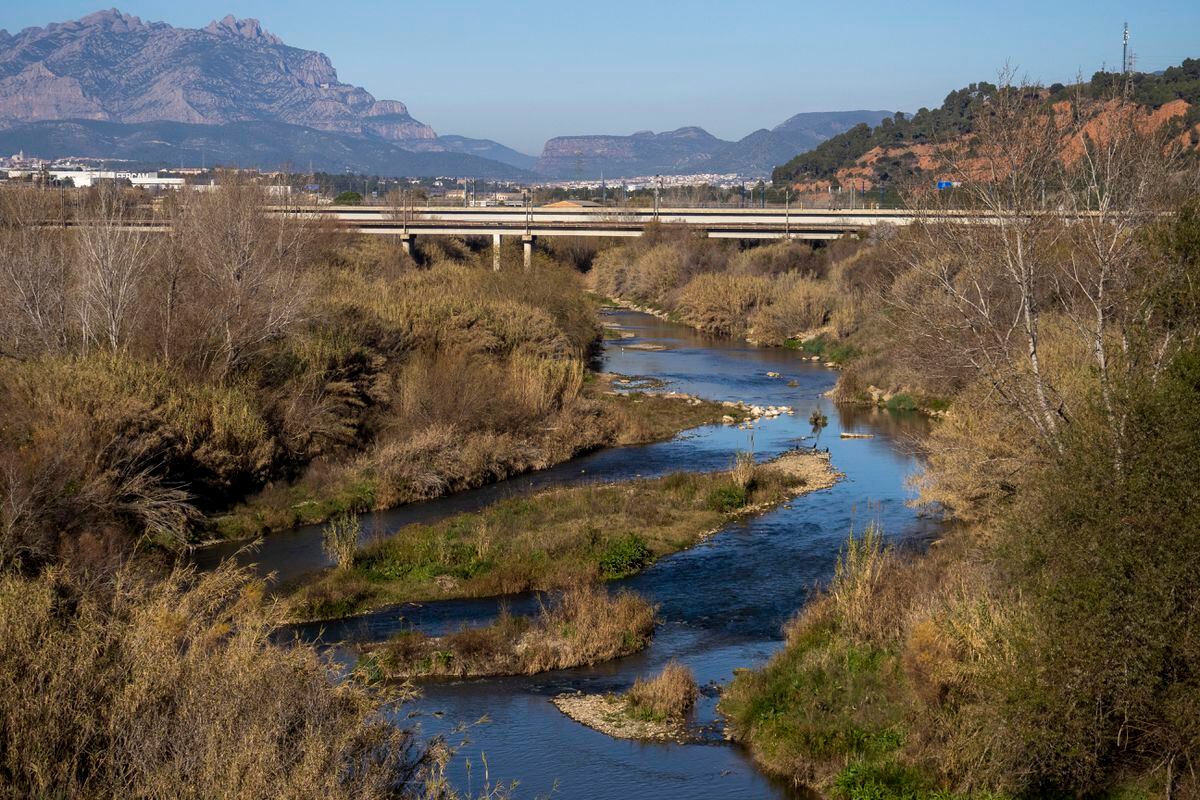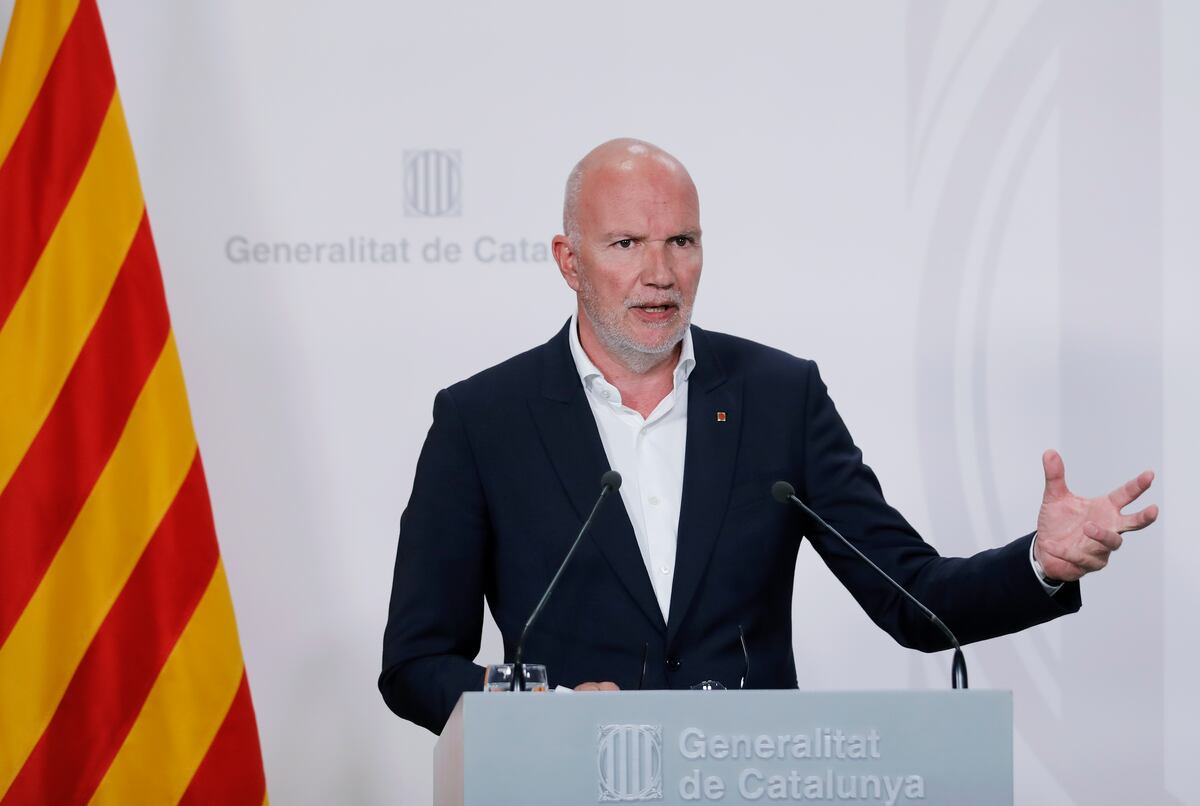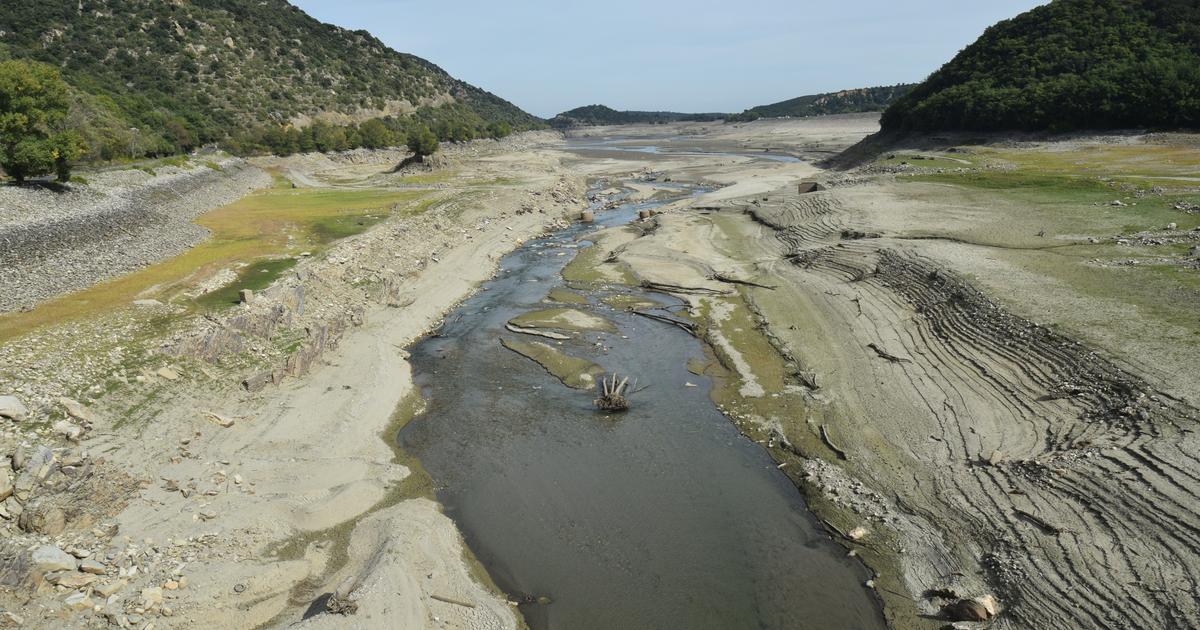The Llobregat river as it passes through Martorell, this Wednesday.Carles Ribas
Reclaimed water acquires more prominence in the Generalitat's water strategy in a scenario of scarce rainfall: the Barcelona area continues to be on drought alert since the end of November, and on pre-alert since February 2022. The Catalan Water Agency (ACA) It has been carrying out tests since December to increase the flow of the Llobregat in an "exceptional" scenario with low reserves to maintain its ecosystem and for domestic consumption through recycled water.
This 170-kilometre river that rises in the Sierra del Cadí is the second water supply channel to Barcelona after the Ter.
The strategy seeks to extract as little water as possible from the Catalan reservoirs, which are at barely 30% capacity, half that of a year ago.
Catalonia has more than 40 regeneration stations that treat wastewater that has previously passed through a treatment plant.
And for the next few years, the Generalitat's intention is to continue increasing production capacity.
It is used for industrial, agricultural and recreational use.
A third of the 60 hectometres of reclaimed water provided by these facilities in 2022, 10 more than the previous year, was for these uses.
The rest was used to guarantee the ecological flow of the river for its flora and fauna, thus avoiding resorting to releasing water from the reservoirs.
The internal basins of the Catalan rivers have applied a regime of minimum mandatory flows since 2020, which depend on each section and the time of year.
Since 2008 various restoration plans of the Municipalities of the Barcelona Metropolitan Area have recovered the water quality of the final stretch of the Llobregat, contaminated since the 1970s by industry and the urban population.
For example, wells were built in the delta to infiltrate fresh purified water into aquifers to prevent the ingress of salt water, a phenomenon known as "salt intrusion."
In 2022, the amount of water regenerated in this barrier against salinization in the Llobregat delta has tripled due to the lack of natural contribution from the river: from 2,000 cubic meters per day to 6,000.
The Llobregat delta is part of the Natura 2000 Network, a European ecological network of biodiversity conservation areas that has special protection areas for birds (ZEPA).
The European Commission warned Spain in 2021 with a letter of summons (the first step to impose a sanction) for the lack of protection of this green lung cloistered between the airport and the port of Barcelona.
The Generalitat is in the process of approving a "Plan for the Protection of the Natural Environment and the Landscape and a Management Plan for the Agrarian Space" that grants environmental regulations for this space.
In parallel, the Agbar company is developing a project with the ACA to prepare this recycled water for human consumption, based on applying another treatment to improve its quality after it has mixed with that of the river: purification in three phases.
Other regions of the world have used potable reclaimed water, such as Namibia for four decades or California for several years.
The @govern starts testing them to contribute #regenerated #water to the final tram of the #Llobregat river to make more resources available.
📌The performance is coordinated by @aigua_cat, @accioclimatica, @salutcat and @sostAMB.
👉More information in the press release: https://t.co/uShaDG22RT pic.twitter.com/M6406JtN5U
— ACA (@aigua_cat) January 3, 2023
The Catalan Water Agency has continued this week the tests to check if there are changes in the quality of the Llobregat after injecting recycled water in a stretch of more than six kilometers from Molins de Rei to the Sant Joan Despí water treatment plant.
Until December of last year, the reclaimed water from the Llobregat was only provided for the ecological flow below this point.
A fifth of the water that now circulates through the Llobregat in this upper section is renewed and the ACA intends that in February it will be a quarter: from 400 to 800 liters per second.
According to sources from the public agency that oversees water management in Catalonia, "once that figure is reached, it will be assessed whether this amount is maintained based on the results obtained."
They clarify that, in any case, these tests are to prepare for a "maximum production" scenario in an "exceptional" situation where the Ter-Llobregat reservoirs are below 24% capacity (140 cubic hectometres).
The ACA also has a Llobregat measurement station in the town of Sant Joan Despí, where the flow has decreased every January 1 in the last three years: from five cubic meters per second on average to 3.8 in 2022 to 2, 9 a week ago.
This ACA strategy to take advantage of recycled water aims to extend the water reserves of the reservoirs as much as possible.
The other pillar of this policy are the El Prat and Tordera desalination plants, which have been operating at 95% of their capacity since last August and have provided 57 cubic hectometres of water in 2022.
From the ACA they emphasize that there have not been "significant contributions of rainwater in the reservoirs" since spring 2021, and add that the rainfall regime since autumn 2020 has been "lower than usual".
The Barcelona area has been on drought alert since the end of November, which means restrictions on agricultural irrigation, gardens and recreational uses, among other limitations of the hydrological alert decree.
The reservoirs of the Catalan internal basins are at 30% of their capacity this Thursday, half that of a year ago.
In addition, weather forecasts do not predict heavy rains in the short term to alleviate the drought.
Barcelona takes advantage of the water from the groundwater table of its subsoil
In Barcelona, and given the scenario of drought, in February of last year the City Council presented a plan to combat the lack of rain.
It happens because the municipal services —especially those of cleaning, parks and gardens and sewerage— stop using drinking water.
The city is prepared to take advantage of the groundwater from the city's subsoil and exploit the aquifer where it sits.
Some waters that, in the short term, are not greatly affected by climate change and that —if the drought punishes— would allow drinking water to be released so that the supply is not endangered.
Those responsible for Barcelona Ciclo del Agua SA (BCASA) —the public company that manages the sewage networks, river water retention, municipal supplies, beaches and ornamental fountains— explained that the plan foresees in an extreme case that the 100% of these services use groundwater.
You can follow EL PAÍS Catalunya on
and
, or sign up here to receive
our weekly newsletter
Subscribe to continue reading
Read without limits
Keep reading
I'm already a subscriber



/cloudfront-eu-central-1.images.arcpublishing.com/prisa/D6S7A46G4BGF3CAL5DF5CX7J4U.jpg)
/cloudfront-eu-central-1.images.arcpublishing.com/prisa/R65LZW6EVZDNDFZPK25RWRQTVY.jpg)
/cloudfront-eu-central-1.images.arcpublishing.com/prisa/YVHMWL7DMVBDDK33L37HIKIMP4.jpg)

/cloudfront-eu-central-1.images.arcpublishing.com/prisa/CBM2UCNBEJCXFLJSEVQOH6Y5WU.jpg)







